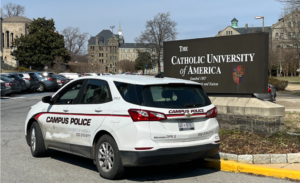COP26: Overview and Outcomes

Image courtesy of Wikipedia
By Caroline Morris
From Sunday, October 31 to Friday, November 12, COP26, the 2021 United Nations climate change conference, was held in Glasgow, Scotland to further the fight against ecological ruin.
The COP (Conference of the Parties) was first held in 1995 under the “Presidency” of Germany. The conference has been held every year since its origin, pulling in more nations, businesses, and organizations over time, until the COVID-19 pandemic.
Due to the restrictions necessitated by the COVID-19 pandemic, COP26 was delayed until 2021, picking up the conversation from the previous council held in Madrid, Spain, COP25, with tens of thousands of participants attending.
One of the other key past conferences with which COP26 engaged was COP21, which created the Paris Agreement.
The official COP26 website reads: “Under the Paris Agreement, countries committed to bring forward national plans setting out how much they would reduce their emissions – known as Nationally Determined Contributions, or ‘NDCs’.” Another qualifier of the Paris Agreement was that all parties would come back every five years with updated plans with their climate conservation ambitions. COP26, having been pushed from its original 2020 date, acts as the first mark of return since this plan was created.
Another significant aspect of the Paris Agreement that COP26 dealt with was the goal to keep global temperature increase to a maximum of 2℃, with an ideal of 1.5℃. Looking at the progress toward this objective was one of the foremost focuses of the conference.
The conference cited four overarching goals to be achieved: 1) Secure global net zero by mid-century and keep 1.5 degrees within reach 2) Adapt to protect communities and natural habitats 3) Mobilise finance 4) Work together to deliver.
In order to achieve the first goal, countries discussed an acceleration of phasing out the use of coal, combat against deforestation, a faster switch to electric vehicles, and more investment in renewable energy. For the second, they pushed protection and restoration of ecosystems while also creating structures to protect communities from the unavoidable consequences of climate change. For the third, they aimed to get developed countries to mobilize at least $100 billion in climate finance per year to make the first two goals actionable. For the fourth, they aimed to finalize the Paris Rulebook and set a precedent for working collaboratively.
After the negotiations that took place throughout the run of the conference, many of these goals were agreed upon and courses of action were laid out. The COP26 website summarized the outcomes under four categories: Mitigation; Adaptation, Loss and Damage, Finance; and Collaboration. These categories are meant to align with their initial objectives.
In regard to Mitigation, the two main goals were the 1.5℃ cap and reducing carbon emissions to a net zero by 2030. Approximately 70% of the world’s economy is committed to the 2030 goal, and there is still hope for the 1.5℃ aim.
“We can now say with credibility that we have kept 1.5 degrees alive. But, its pulse is weak and it will only survive if we keep our promises and translate commitments into rapid action,” stated COP26 President Alok Sharma of Britain.
This action includes withdrawing international support for fossil fuels, a movement to which 34 countries and five public finance institutions committed. This intention was made actionable by the mobilization of $20 billion to create a just transition to renewable energies.
The financial aspect of COP26 also included a goal for developed countries to raise $100 billion annually to support the climate change movement; the conference claims to have made significant progress toward this goal. It is now estimated that “$500 billion will be mobilised over the period 2021-25.”
COP26 delivered on the Adaptation, Loss and Damage front with finance packages related to the environment and land use. Additionally, in order to protect those who will inevitably be affected by climate change, “80 countries are now covered by either Adaptation Communications or National Adaptation plans to increase preparedness to climate risks.”
The Collaboration goal was met by the finalization of the Paris Rulebook, which offers “the detailed rules and systems” to make the Paris Agreement actionable.
Overall, COP26 seems to have made progress towards achieving the goals it set out before the start of the conference, even if all have not yet reached ideal numbers, and they have maintained committed to transparency about the process and progress of the climate change initiatives.
The next step will be seeing how actionable these ideas are and how well the commitments made hold up in an ever-shifting political landscape.






